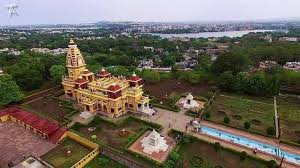Bilaspur’s Model Success in the Pradhan Mantri Awas Yojana
Few developmental stories reflect the spirit of inclusive governance as vividly as Bilaspur’s achievement in implementing the Pradhan Mantri Awas Yojana Gramin. In the financial year 2024 25, the district has reached a historic milestone by completing over 33,687 houses, the highest in the state. This is not merely a feat of administrative excellence; it is a triumph of human dignity, providing families with stability, security, and the confidence that comes from having a roof of their own.
Building Homes, Building Confidence
Under the visionary leadership of Chief Minister Vishnudev Sai, Chhattisgarh has redefined rural housing reform. Bilaspur’s outstanding performance owes much to its mission mode execution, consistent fieldwork, transparent financial assistance, and sustained engagement with beneficiaries. Out of the total target of 66,510 homes, nearly 59,000 were sanctioned, and more than 33,000 were completed within the stipulated period, an exemplary record that speaks volumes about effective governance and teamwork at every level.
The Pradhan Mantri Awas Yojana was never meant to be a mere infrastructure scheme; it is embedded in the idea of empowerment. In Bilaspur, the program’s impact goes far beyond brick and mortar; each home stands as a symbol of dignity and social security. With timely financial disbursement through three phases, the government ensured momentum, resulting in not just construction progress but an emotional transformation. Better housing has provided children with a conducive environment to study, the elderly with protection from harsh weather, and women with greater safety and convenience in managing their households.
Governance Through Transparency
The introduction of the “Mor Awas, Mor Adhikar” digital portal represents a crucial innovation in governance. By empowering citizens to track the status of their applications and eligibility in real time, it embodies transparency and accountability at their most practical. Technology, in this sense, bridges the distance between policy and people, eliminating red tape and ensuring that the benefits reach those who truly need them.
Every approved beneficiary under the scheme receives financial assistance of Rupees 1,20,000, distributed in three installments, Rupees 40,000, 55,000, and 25,000 respectively. The uniformity and efficiency of this mechanism have instilled a sense of ownership and participation among rural citizens, turning recipients into stakeholders in their own progress.
A Model for Rural Transformation
Bilaspur’s success in the Pradhan Mantri Awas Yojana serves as a definitive model for how strong political will, administrative efficiency, and community participation can converge to produce transformational outcomes. This achievement is not confined to housing alone; it embodies the promise of equitable development, where welfare is not delivered as a favor but as a right.
In every completed home lies a story of renewed hope, of a family that now lives with dignity and pride. Bilaspur’s example demonstrates that when governance becomes empathetic, transparent, and accountable, development transcends statistics and becomes a lived experience. It is, in the truest sense, the building of a stronger, more confident India, one home, one family, and one roof at a time.
Palash Harry Patel
Editor, CANON TIMES




